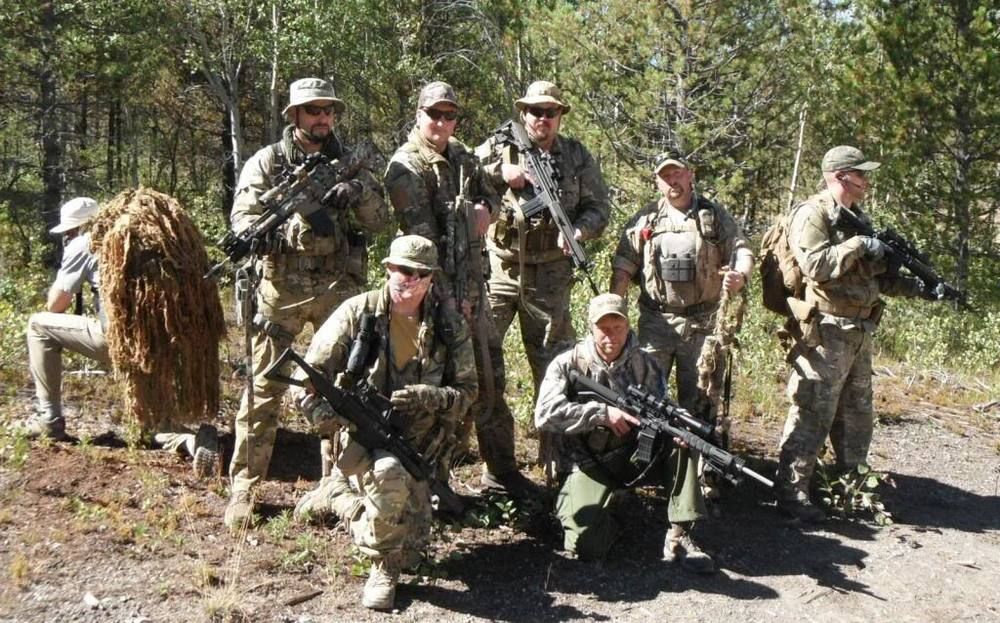This weekend I attended Eric Pfleger’s Pathfinder, Recce, Man Tracking Operations class. I’ve trained with Eric several times before, including sniper and team tactics courses. These have been among my very favorite classes, in part because they were classes that really broke new ground for me, opening up subject areas I’d never trained in before, and in part because Eric is such an excellent instructor and all around good guy. It’s fair to say I entered this class with high expectations.
The class was held near Anaconda, Montana. We stayed at the excellent Sugar Loaf Lodge and the class itself was held on a nearby piece of property owned by one of the students. This is the same setup Eric used for a Team Tactics class I took from him two years ago, so I came knowing pretty much what to expect.
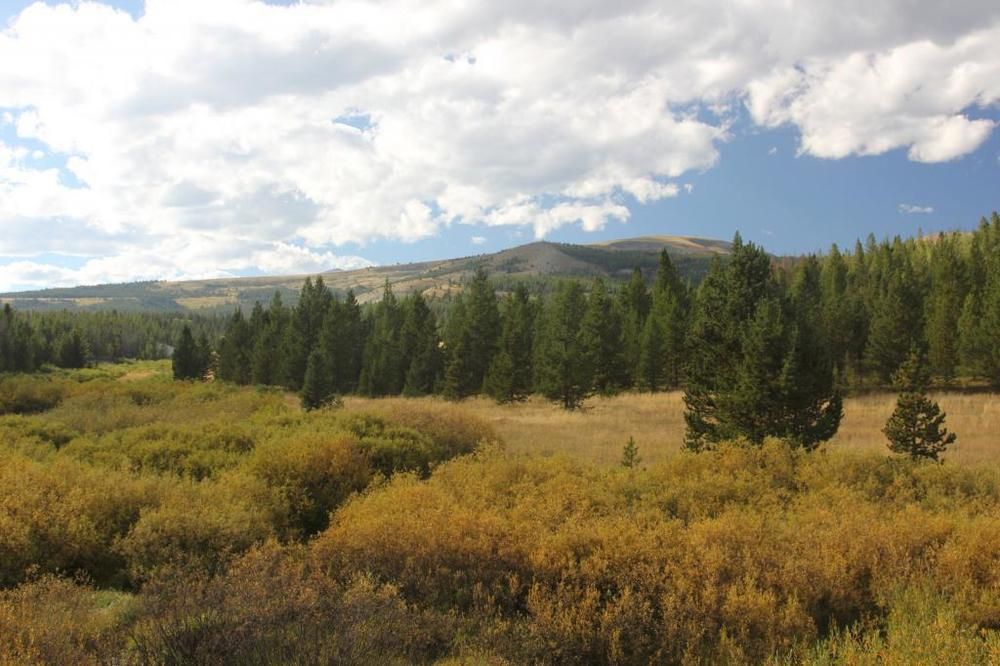
The class doesn’t really emphasize live fire, but rifles were required nevertheless. I brought my PTR91, topped by a Browe optic. Given the Browe’s height, I figured it would benefit from some sort of cheek riser. Following a suggestion from Paragon Pride member Georro, I put an AR style buffer tube on the PTR and mounted a Magpul CTR stock with their 3/4″ cheek riser. This brought my eye line nicely up to the level of the scope. This class would be the first time I worked with this arrangement, aside from zeroing it.
Most of the rest of the class brought .308 rifles, including some PTRs and a SCAR 17. There were also a few ARs in .223, though they were definitely in the minority.
For support gear I brought an Infidel chest rig. This is the first time I’ve used it with a .308 rifle. While the mags are a bit tight in the pouches, they do fit. I also brought an Eberlestock Halftrack backpack to carry my extra gear (binos, rangefinder, rear bag, shooting mat, etc.).
I’ve experimented with various methods of carrying a pistol with field gear, and not come up with one that I really like (I have decided that a thigh rig really isn’t a good choice for field use). For this class I went back to a method I’ve used before. I stuck a Gideon kydex holster in the rightmost magazine pouch on the chest rig and used a zip tie to hold it in place. The holster protects the pistol’s trigger and, in concert with the bungee retention on the mag pouch, holds it in place. My pistol for this class was a Glock 17. We had a mix of chest rigs and war belts, probably weighted a bit towards the latter.
The gear list for the course specified camo, so I brought my multicam (as did everyone else in the class).
Eric had said we would be doing a night exercise, so I’d also intended to bring my NVGs. Unfortunately, I left the ammo can with all my NV gear in it sitting on the table at home.
Friday
I arrived mid-afternoon on Friday and got my stuff set up in the cabin. Another student showed up later that evening.
Saturday
After breakfast and a shower, we headed over to the location of the class. Eric got things started with the usual admin stuff: liability waivers, medical plan, etc. He also went through the subject matter for the class. While he called it Pathfinder, Recce, and Man Tracking, this class could also be described as, “What Eric does for a living.” He’s on an inter-jurisdictional SWAT team up here in Montana, primarily as a sniper. Despite the name, snipers on SWAT teams spend a lot more time observing and doing recon than they do pulling the trigger. Given the rural nature of the area, in Eric’s case that means a lot of walking around in the woods.
This class would very much mirror the sort of skillset he uses in the day job: sneaking around in the woods, land navigation, mission planning, and a bit of tracking and counter-tracking.
We began the actual content of the course with a long lecture on gear. He basically went through the “grab and go bag” and other equipment he uses in his role as a SWAT sniper. A while back, Eric wrote an article titled, “Everything but the kitchen sink,” on a truly comprehensive list of gear for spending weeks in the wilderness conducting tactical operations. This loadout wasn’t quite so extensive, but my notes on it still span eight pages of my little notebook.

He structured this lecture around the concept of different Tiers. Tier 1 gear is what you have on your person, in your pockets, as well as your clothing. This includes stuff like a handgun, knife, and a tourniquet for basic trauma treatment. Given the rural nature of his AO, he also carries land navigation equipment (map, compass, GPS) and a survival kit. The survival kit he had was really quite impressive in terms of fitting a lot of gear into minimal space.
For the sniper/observer/recce role, Eric also included some observation gear, including a notebook and pen, and a small camera in the first line gear.
Tier 2 gear is your load bearing equipment: whether a chest rig, battle belt, or other gear. It is mostly focused on supporting your rifle with extra magazines, a dump pouch, etc. It can also include additional observation gear, like binoculars, and a bit of food and water.
Eric also took this opportunity to talk about ghillie suits. He has several nice ones that he showed off. He also talked about the importance of camouflaging your head and hands. They tend to be the last thing people think about, but are among the easiest to see, given how much we move our heads and hands. Eric also covered some other clothing options, like camo bug suits you can put on over street clothes to instantly make your self blend in a lot better when going from an urban to a rural environment.
Tier 3 gear is stuff in (or on) your rucksack. I won’t go through everything he had in there in detail, but by and large it can be divided up into several broad categories. He had more observation gear, including a spotting scope, another camera, and a video recorder. There was some more navigation equipment: maps, compass, a backup GPS, and even some pace count beads. Some gear for concealing the sniper, such as sniper veils. Most of the space was dedicated to sustainment gear, including food, water, clothing, and shelter. Finally, there was some shooting related-gear: dope cards, rangefinding info and a Kestrel weather sensor.

After the gear lecture we did a quick Kim’s game. Eric showed us an array of items and asked us to memorize them (without writing anything down). We’d come back to them later in the day.
Next, Eric did some lecture on doing ranging with mil reticles. He explained the basics of the method, and passed out some sheets with the basic formula, the height of an averge (72″ tall) man in mils at various distances, and the dimensions of common, standardized items like road signs, conex containers, license plates, etc.
With that we headed out to a nearby area where Eric had set up a ranging exercise. He had scattered several items from that list of known size objects, including Stop, Yield, and Speed Limit signs, and a license plate. He had also scattered four steel targets out near the various signs.

While lots of folks had laser rangefinders, he didn’t let us use them. Instead, he asked us to first estimate the distance using the SWAG (silly wild ass guess) method, then to measure the dimensions of each target in mils and use the formula to calculate the range. I brought out my spotting scope with the Horus mil reticle in it and used it to measure the dimensions in mils (other students used either rifle reticles, or a spotting scope borrowed from Eric). While we were doing this, we encountered a brief rainstorm (it would not be the last in this class).
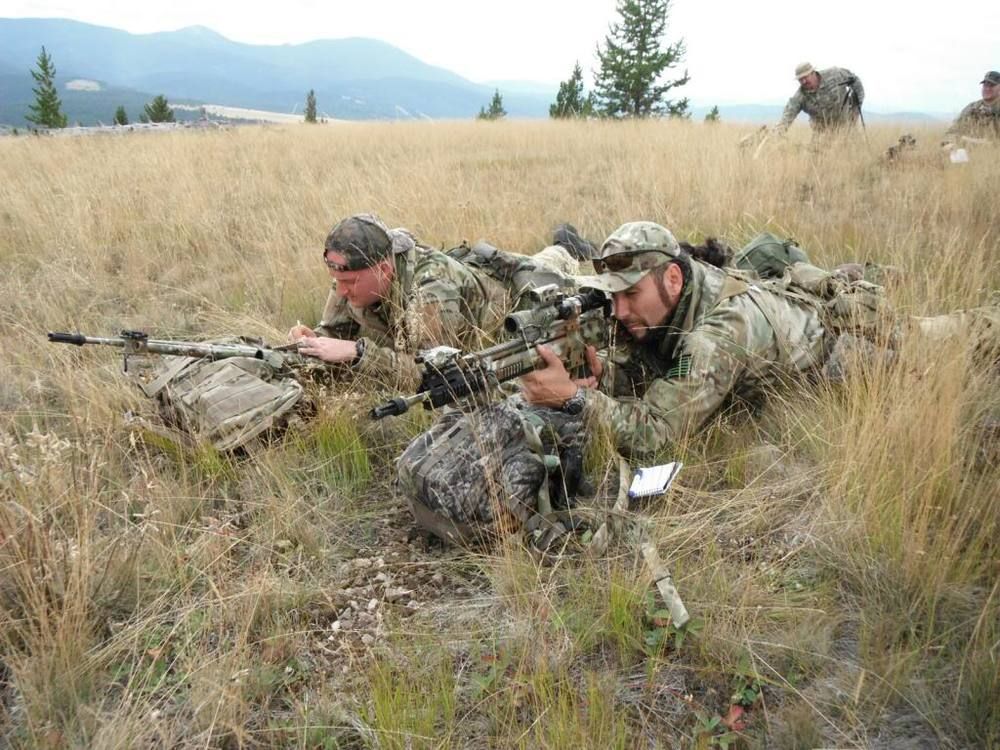
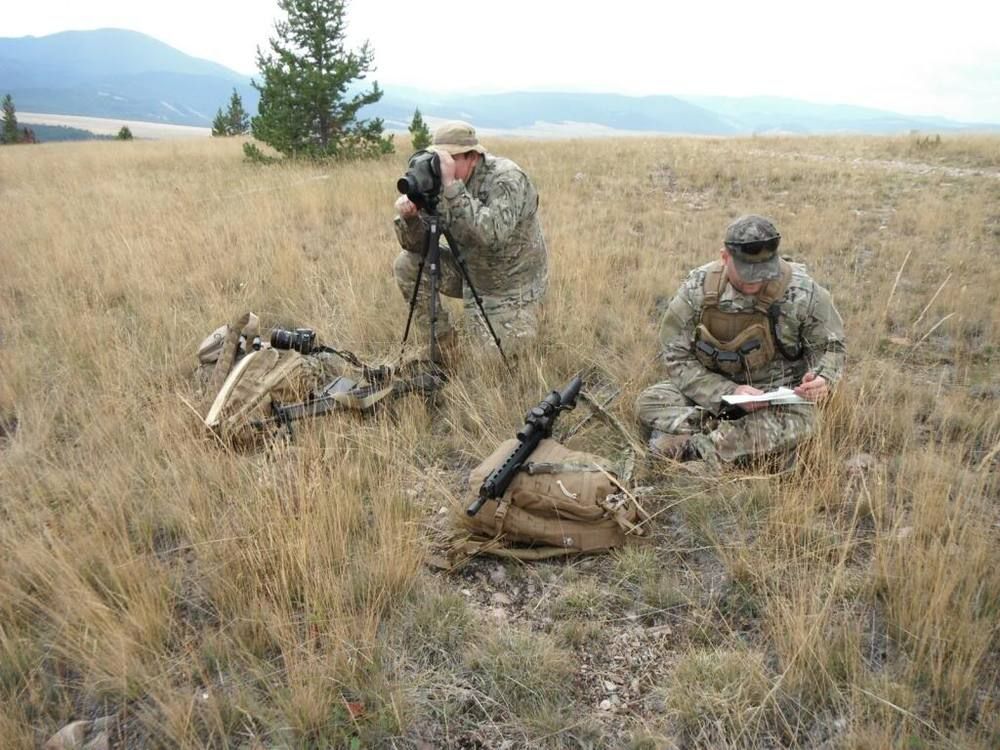
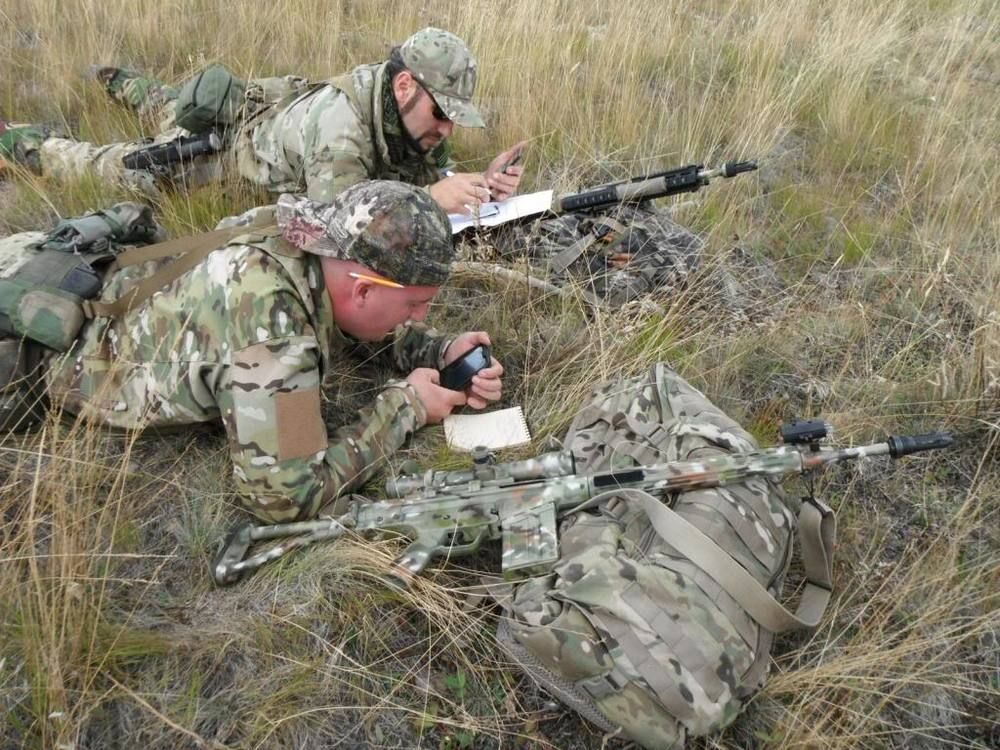

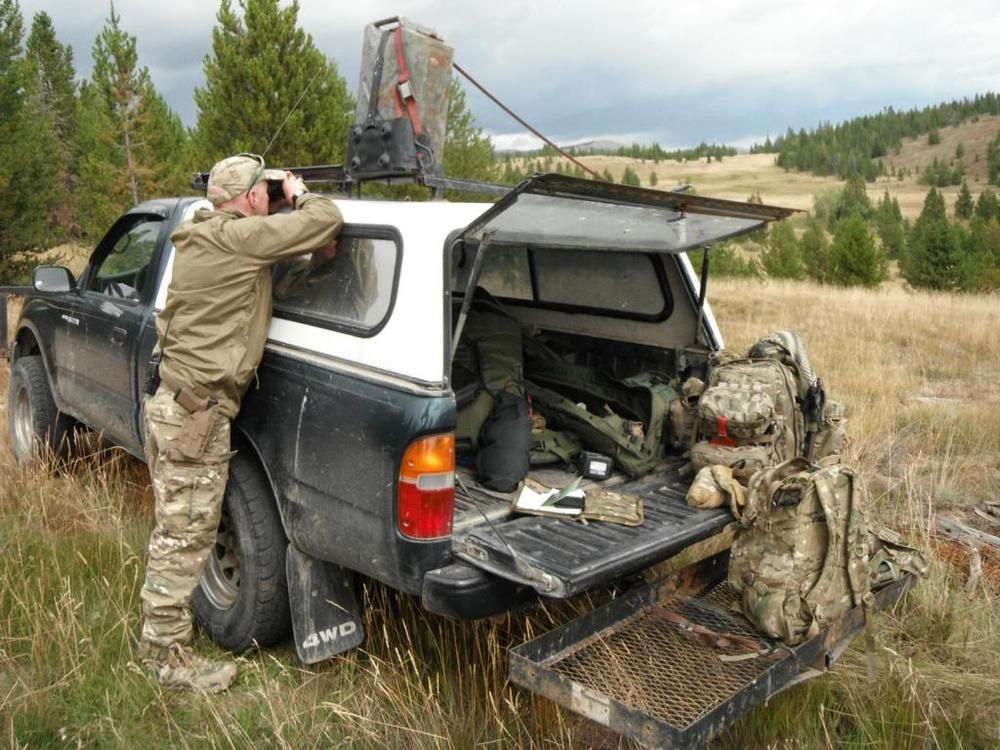
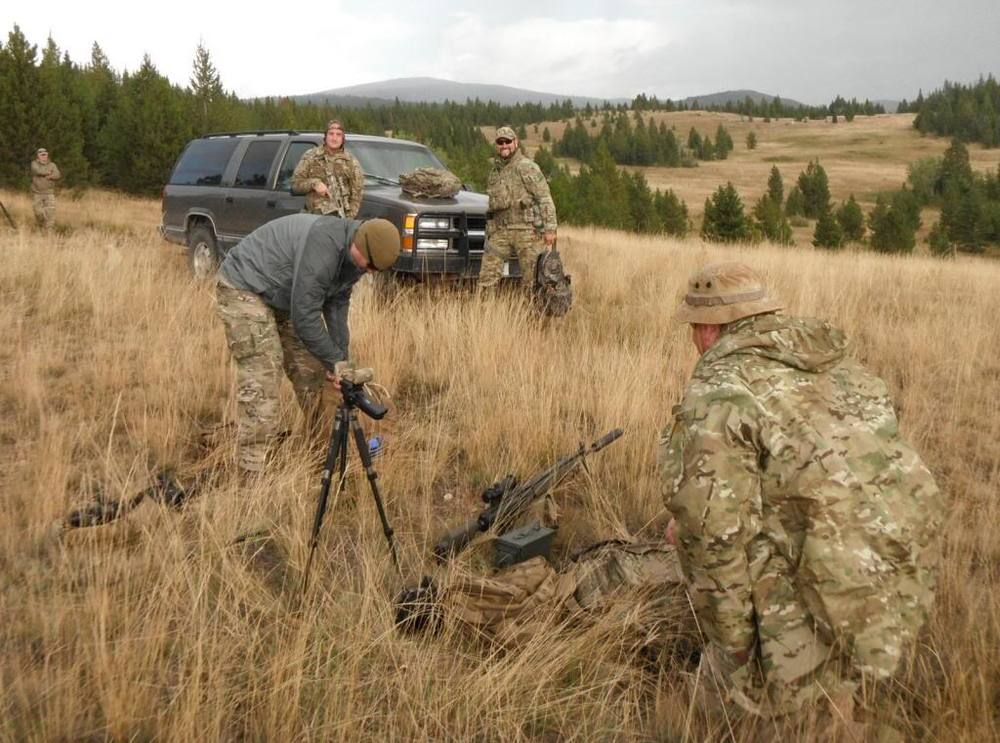

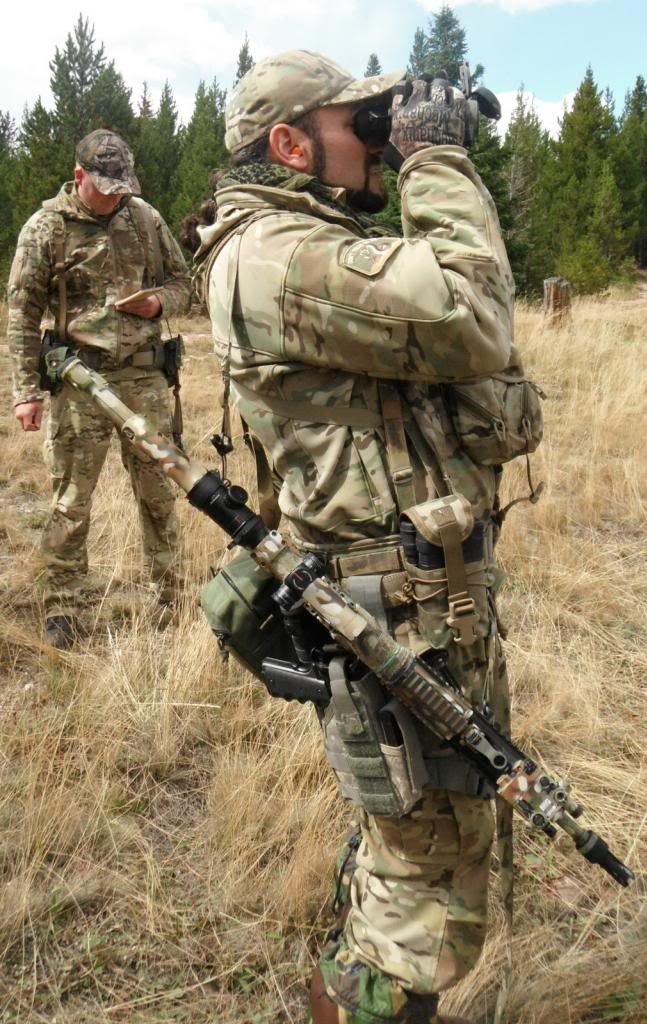
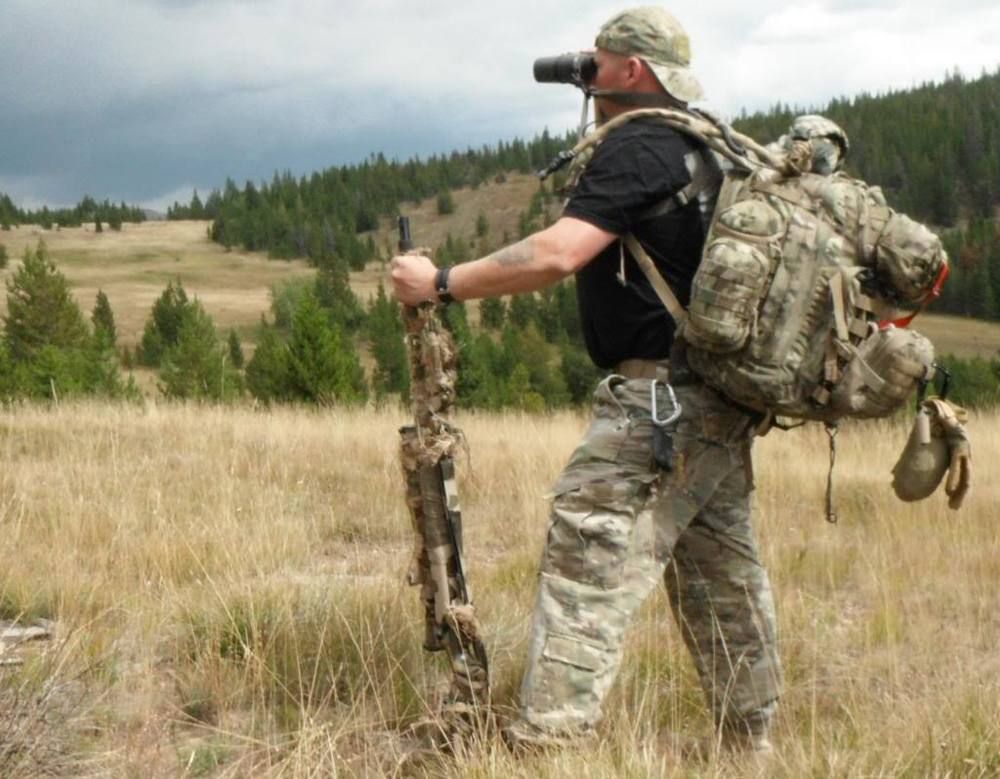
After everyone had a range estimate for each sign, we shot the nearby targets. One of the challenges was that the targets weren’t at exactly the same distance as the signs we ranged, so we had to estimate how much closer or further they were. The other challenge was that the targets were quite small (Eric calls this his “Headhunter Course”). I did well on the closer ones, but an 8” square target at 500 yards is quite a challenge for a battle rifle with a BDC reticle optic on it. Nevertheless, I think I got close enough I probably would have hit a torso sized target.
Once each person had their shot at all the targets, we broke out the laser rangefinders and measured the distance to the targets. I was pretty close on all of them except one where we had to estimate the size of the sign because it wasn’t on the list Eric gave us. We headed out and retrieved the signs and steel targets.
After heading back, we finished up the Kim’s game. We had to write down the objects that Eric had shown us earlier, from memory. Once everyone had their list, we went back to the array of objects and see how we did. I got the majority of them, but there were several that slipped my mind. Eric talked about some strategies for these memorization type challenges, as well as noting that there were online versions that can given the opportunity for practice.
One of the students (who goes by El Mariachi on the Paragon Pride boards) gave a nice lecture on options for inter- and intra- team communications. He explained why ham radios were not really a great choice for what we were doing, largely because each user must be licensed, identify themselves, and any sort of encryption or obfuscation is prohibited.
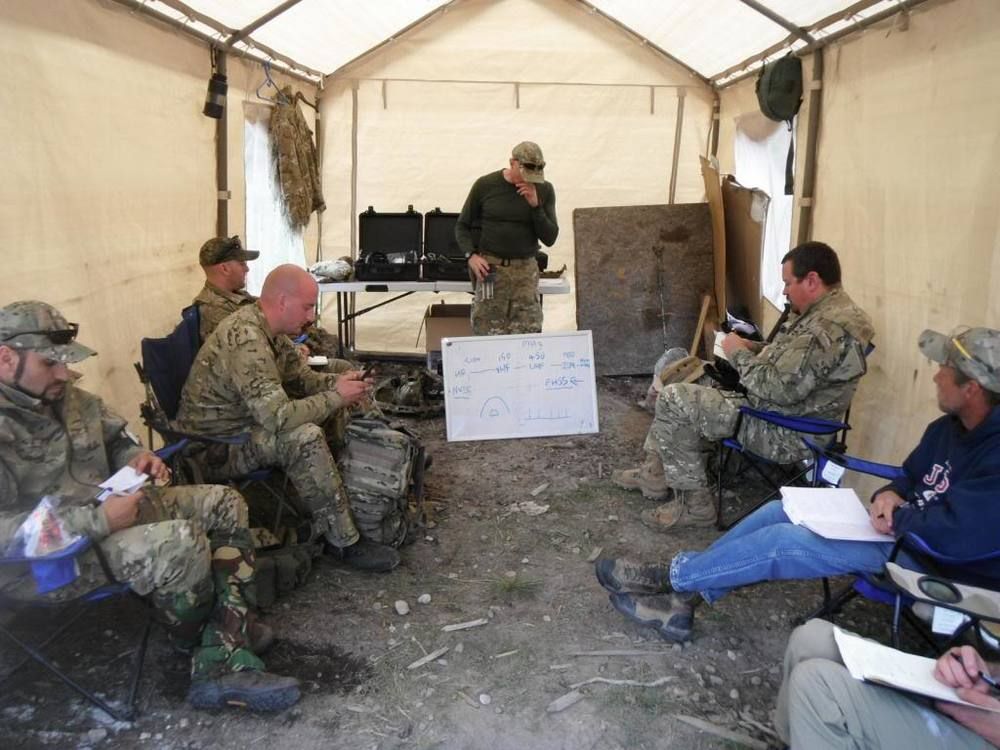
For intra-team communications he really likes the old Nextel/Motorola cellphones with the “direct talk” feature. The cell network that these operated on is no longer in service, but the direct talk feature works phone to phone and does not need to go through a cell tower. They use a frequency hopping spread spectrum technology and a proprietary digital encoding, making them difficult for anyone else to pick up (this isn’t going to stop the NSA, but it provides quite good protection against casual eavesdroppers). They are also very low power, which limits their range, but also limits the distances they can be detected at.
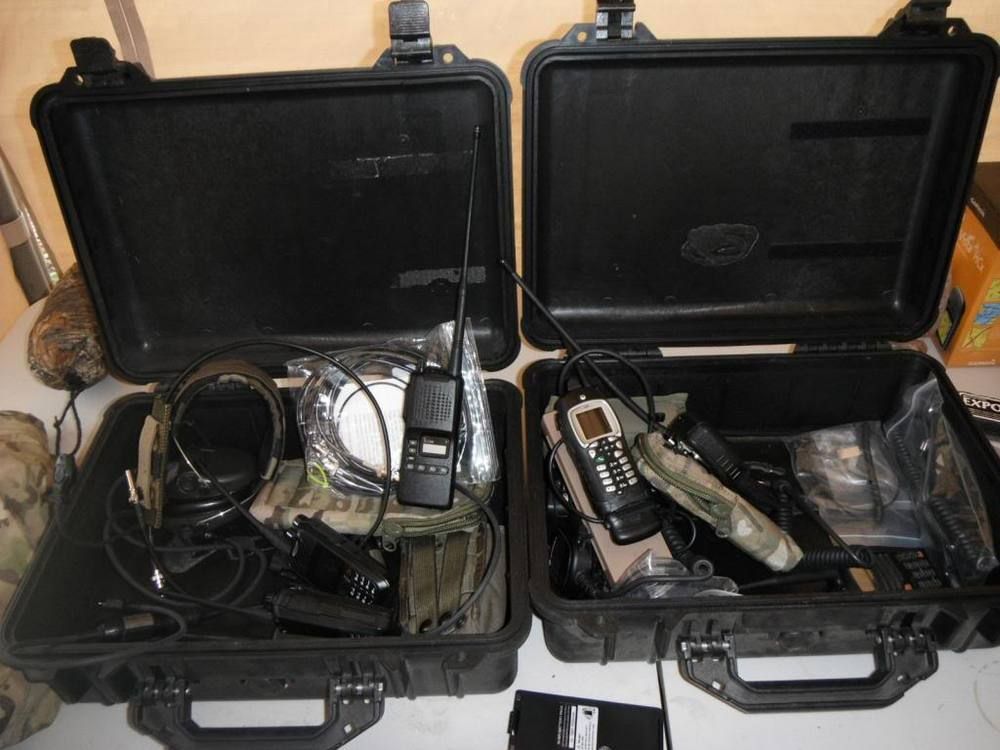
For inter-team communications, he has gone through several options, including commercial bubble pack radios in the VHF and UHF bands, but he’s settled on some digital radios made by a company called Kirisen. These not only have their own obscure encoding, they also have the option of running with 32-bit encryption. They operate at a higher power setting and can get enough range to communicate between teams several miles apart.
He followed this up with a talk on HUMINT (Human intelligence gathering, spying essentially) and area with which he has quite a bit of experience.
We broke for dinner, then reconvened later for a bonfire and some good fellowship. The beer, whiskey, peach cobbler, and stories all flowed freely and a good time was had by all.
Sunday
The first exercise of the day was another observation exercise, but rather than relying on memorization this one relied on our skills in scanning and using magnified optics. Eric had seeded a small field (about 100 yards by 40) with various objects for us to find. Many times when people do this sort of challenge, they set it up so that the objects are fairly easy to spot. In this case, Eric did not. Most students only got one or two objects of the seven he had out there (he’d placed eight, but we later found that one had fallen down out of view). Eric also pointed out that he only gave us about 20 minutes to observe. In a sniper school, this sort of exercise might last for hours.

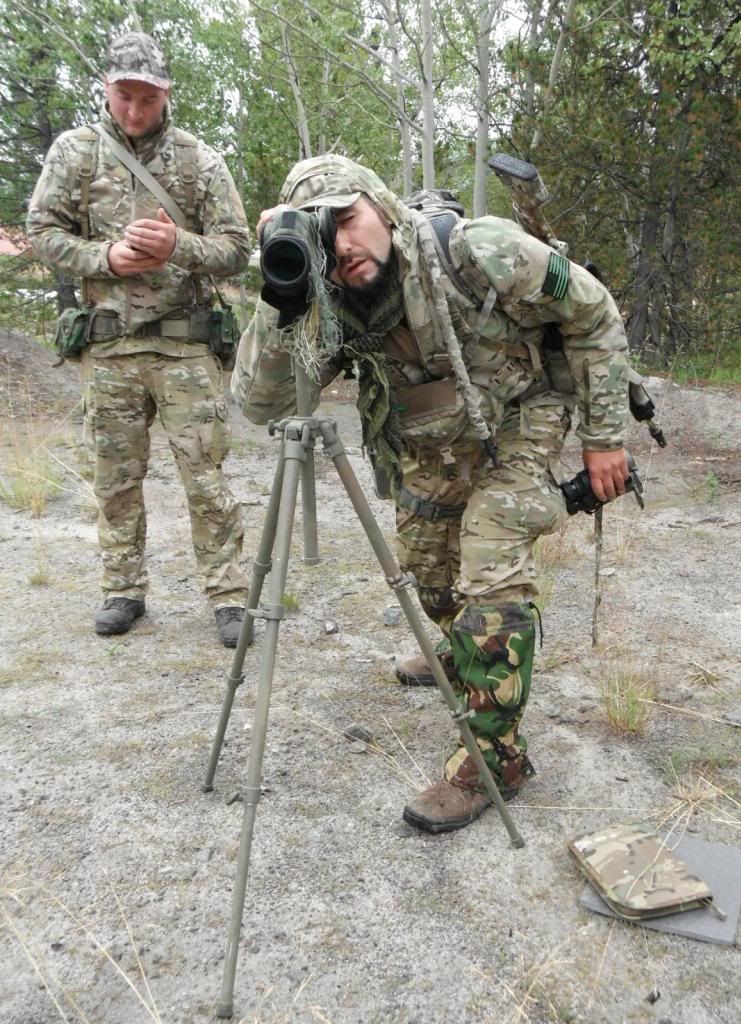

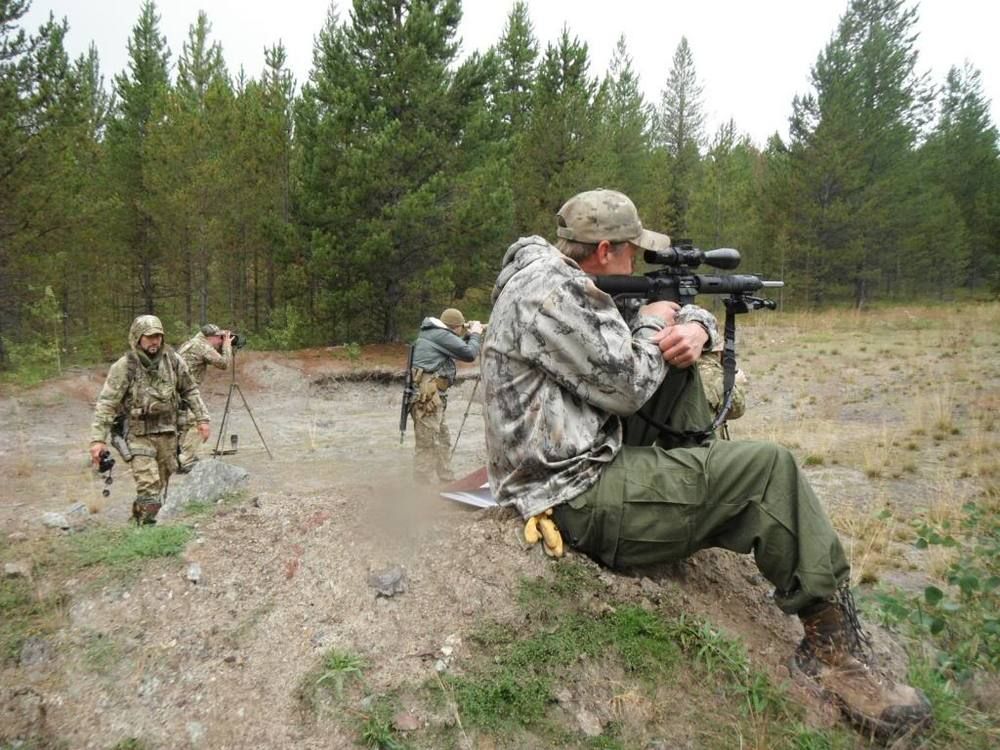
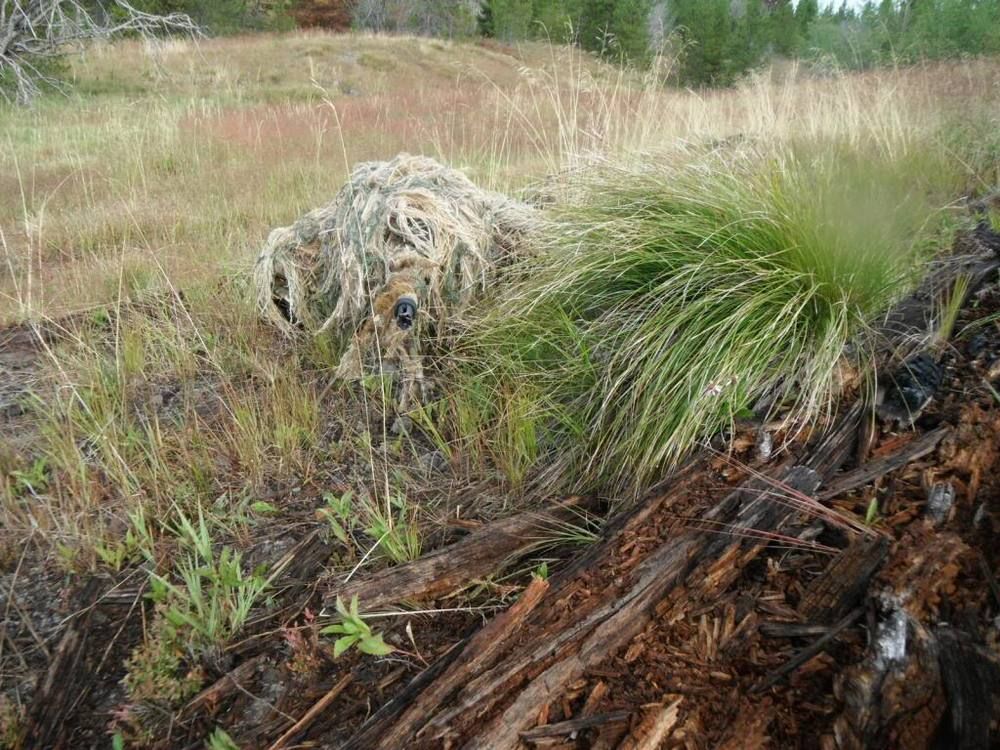
Next up was some land navigation. Eric passed out the topo maps and went through some of the basics of map interpretation, explaining how to interpret contour lines and what different symbols mean. He also showed off other types of maps, including some aerial/satellite imagery off of Google Earth. He also covered pace counting, and using pace counting beads.
He took us outside and talked through the basics of orienting the map to true north (including accounting for magnetic declination). Then we did a bit of terrain association, locating our position on the map based on topographic features. He also talked a bit about triangulation, taking bearings on visible landmarks and using the back azimuth to locate your position on the map.
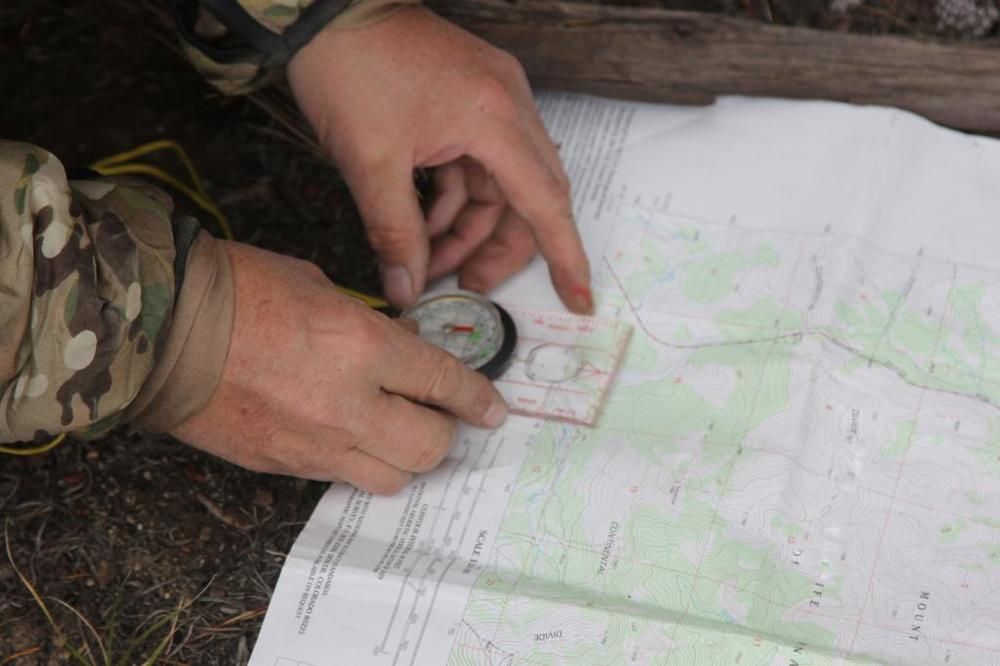
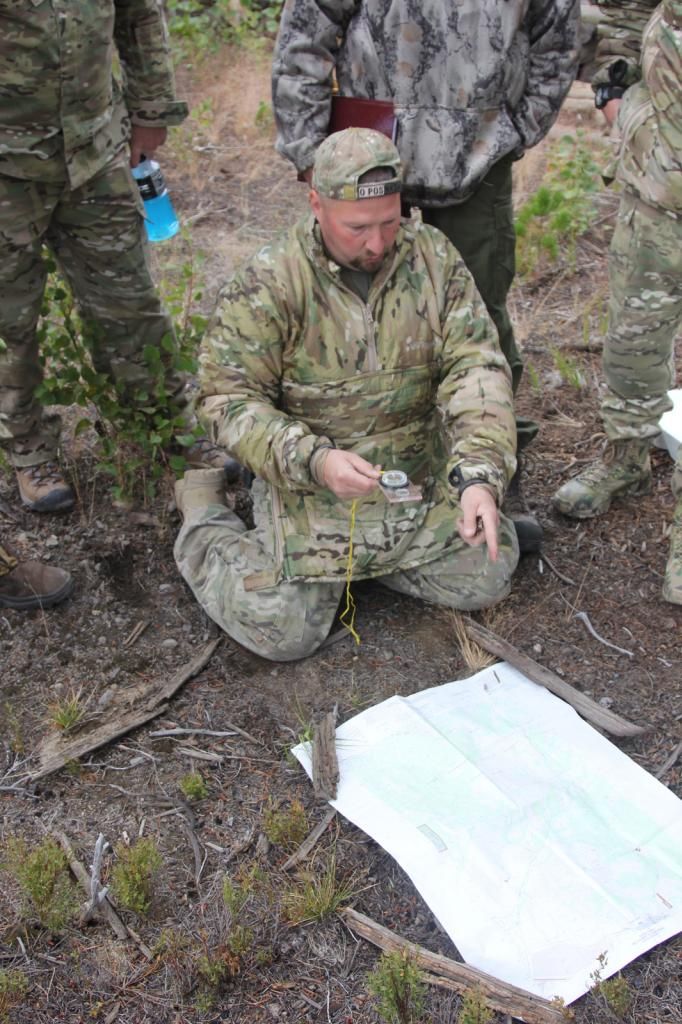

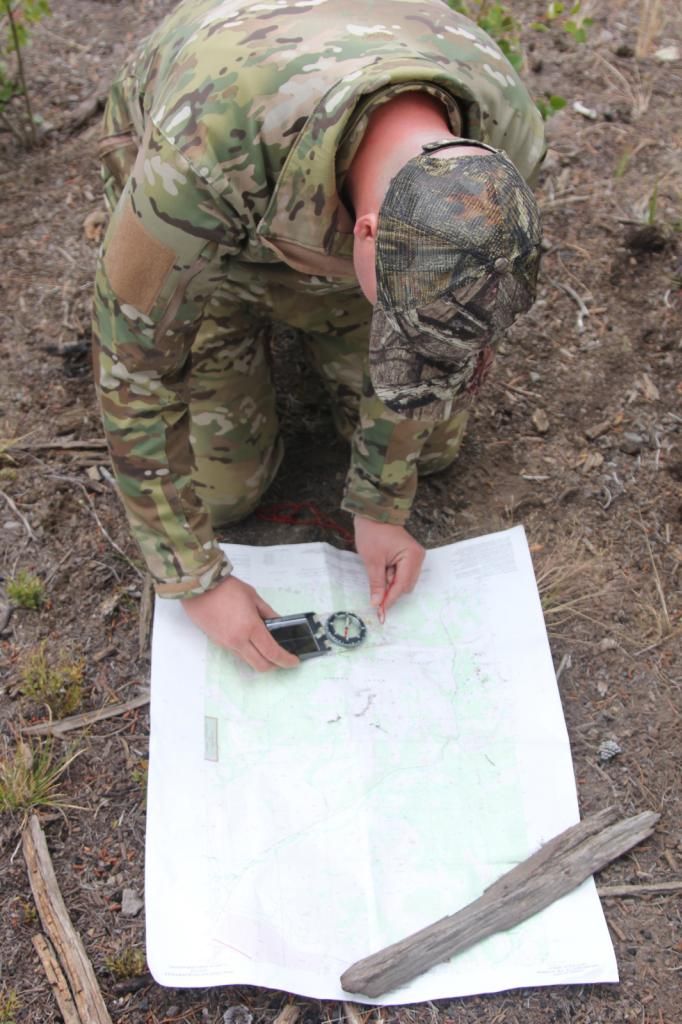
While Eric emphasized the need for these fundamental skills, he also talked about the usefulness of GPS receivers. He covered the basics of how to use them, including both finding your position and navigating to a given waypoint using GPS. Most folks had some sort of GPS with them (I had an app on my phone) but Eric had a few loaners for the folks who didn’t.
After lunch we did a land nav/recon exercise. We were given three sets of coordinates up in the hills, and told to navigate and move tactically to them and locate a specific individual based on a picture (Eric had posted photos on a tree at each position). Unfortunately, the rain had blurred out some of the pics and meant you had to get right up on top of them in order to ID the target. Eric and a friend of his would serve as the OPFOR.
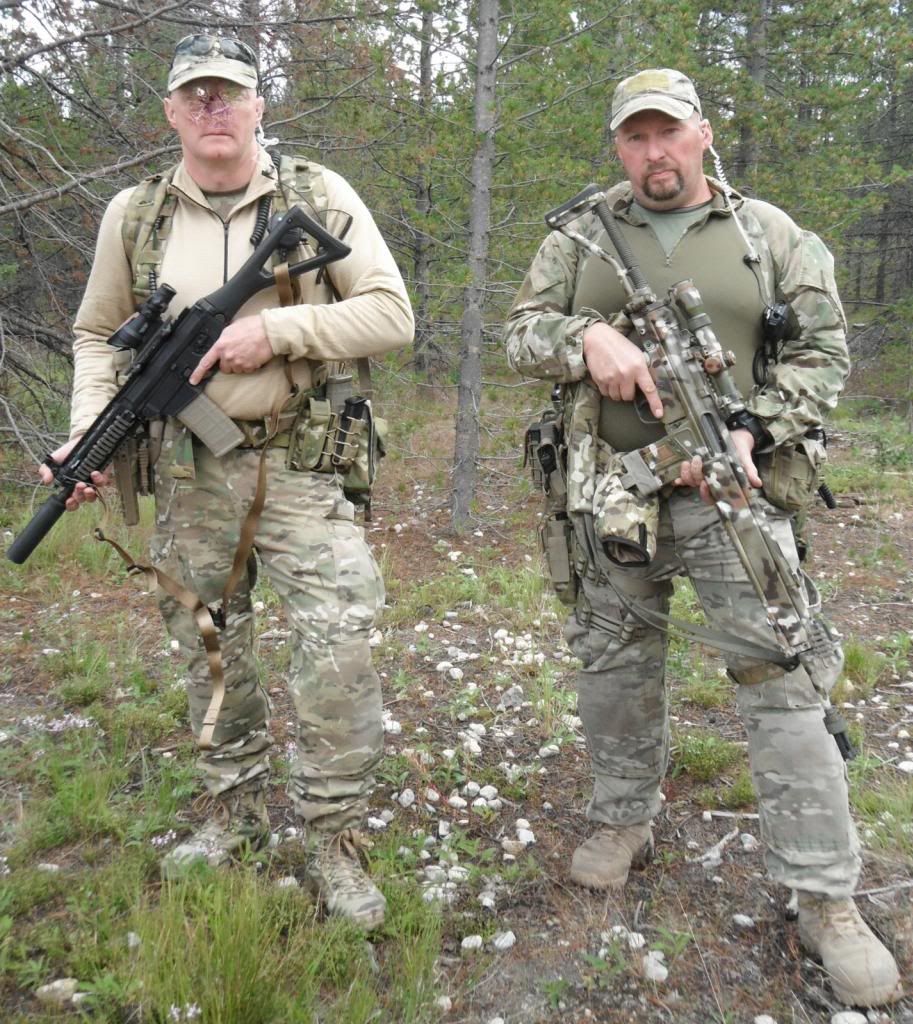
My team had a couple of contacts with the OPFOR (one at a road crossing and one at one of the locations). We also had a couple of times when we had to hold up to avoid encountering another team (the teams were supposed to avoid each other as well as the OPFOR). Were able to locate our target at the third set of coordinates.
When everyone got back to the base camp, Eric did a lecture on mission planning and gathering intel. He talked about sketching objectives, and systems for systematically describing building features (identifying the side, floor, and door/window. He talked about the sort of information you would want to gather before doing a raid on a building: structure, materials, layout, notable features of the grounds and environment.
We broke for dinner and reconvened afterwards for a night exercise. We had a mission briefing describing what we were going to do and how. The mission was a reconnaissance of a nearby structure. Eric also issued the Nextel i355 radios one of the students had brought, so everyone had a radio available. More than half of the students had NVGs as well (even after my bit of stupidity). We did a walkthrough in the yard there to get the kinks worked out and help ingrain the plan.
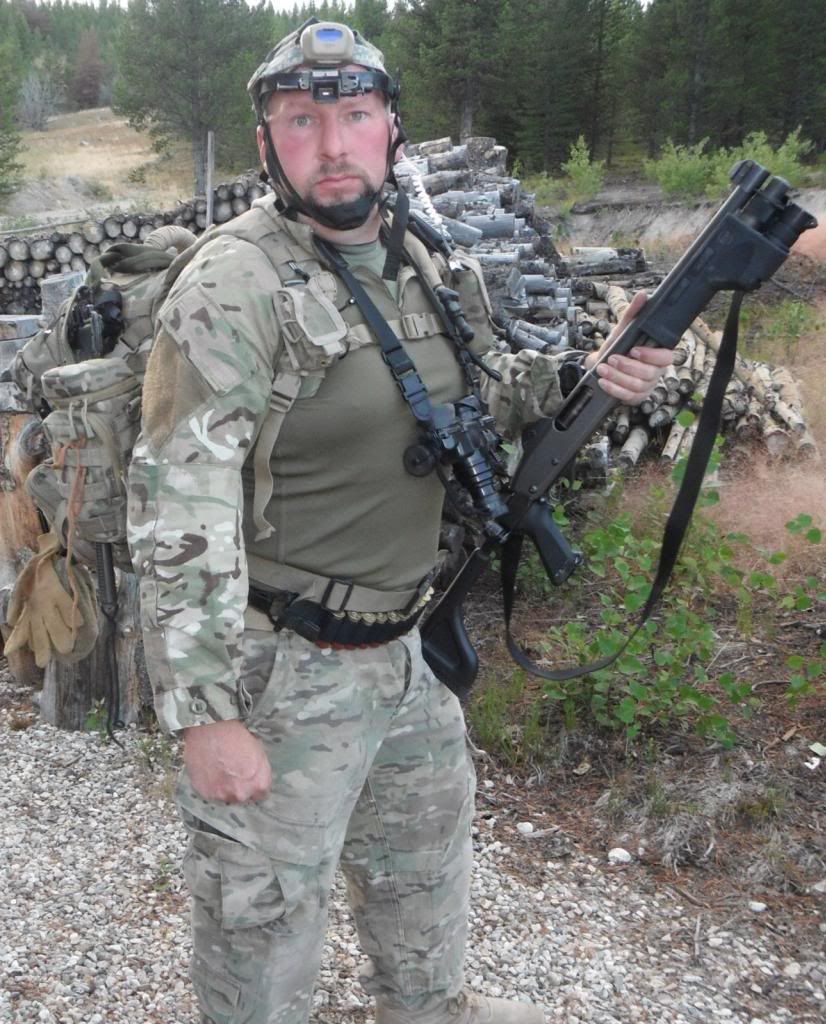

Our insertion was done by vehicle, driving up some logging roads to the area where we’d been looking for targets in the land nav exercise earlier. Then we moved back down the hill and approached the target building. Eric and two students, assigned as the Quick Reaction Force held position near the Objective Rally Point, while the rest of the team moved further down the hill nearer the objective.
It was a fairly dark night, with about a quarter of moon, often obscured by clouds. Moving through the woods and following the man in front of you was often challenging. We held up at the Forward Layup Point while the team leader and another student moved forward for a commander’s reconnaissance to pick our observation positions.
We moved up and observed the structure. We didn’t see anybody, but there were some signs of activity (exterior lights, lights being turned on and off, etc.) so we didn’t get very close to avoid compromise. After observing for about ten minutes, we pulled out and walked back to our rendezvous with the QRF, then back to the vehicles.
By the time we got finished and back to base camp, it was about midnight. Eric decided we wouldn’t start the next morning until 10am, rather than the 0900 of previous days.
Monday
After a short night’s sleep were reconvened later Monday morning. Unlike the occasional rain of the past two days, today dawned clear and stayed that way.
The first order of business was a debrief of the exercise we’d run the night before. We talked about some comms issues, which by light of day were boiled down to a bum headset and a dead battery. This also included some discussion of the need for backup comms and for a lost coms plan/SOP in the event radios go down. During the exercise we also noticed that the Nextel i355s we were using had very bright screens, bright enough to see even through the material of a pack or pouch. This is something that can be solved with a bit of black duct tape, but it’s something to be aware of.
Many of the students also commented on the difficulties of moving at night. This is not necessarily a problem that NVGs can solve. Night vision units can only be focused at one distance at a time, and if you want distance vision to evaluate routes and see threats, you aren’t going to simultaneously have close-up vision to see where you should be putting your feet or the tree branch you are about to run in to. One solution that may help as far as following the guy in front of you is “cat eyes”: small bits of luminescent tape on the back of their helmet or ruck that are just bright enough (with fully adapted night vision) to give you a point to follow.
I had some issues with both of my weapon sights. My pistol has night sights on it and they were quite visible (at least to me) during the entire exercise. I probably need to go with some sort of flap retention to cover them up on night ops. I was running the Browe on my rifle, which has an excellent illuminated reticle that automatically adjusts to light conditions. But twice during the exercise I noticed it on full brightness. I figured it must have bumped the button and put it into manual mode. More care (and regular checks) may be necessary to avoid this.
With the night operation thoroughly debriefed we moved on to the tracking portion of the class. Eric emphasized that there’s no way one day of instructions can make us full fledged trackers (indeed, he would even disclaim that moniker himself, despite years of experience tracking game and a fair amount of training to track men). Instead, this was intended to give us an overview of the basic concepts, and to give us some knowledge that could be used to frustrate anyone attempting to track us.
He started out with his list of the 10 Deadly S’s: Shape, Shine, Silhouette, Shadow, Spacing, Scent, Speed, Spoor, Sound, and Signal. These apply not just to tracking, but to anyone trying to remain unseen (or on the flip side, seeing someone who would rather remain unseen). Eric went through examples of each, and how they apply to avoiding detection.
Moving on to tracking proper, Eric talked about the sorts of signs that trackers look for. These can include the obvious, like footprints, broken branches, and bent grass, to some that I wouldn’t have even thought of like small scuff marks on logs or roots, or transfers of material like mud or leaves to someplace they don’t belong. One interesting thing he mentioned was a tendency for novice or amateur trackers to concentrate on looking for footprints, even in environments that aren’t all that suitable for them, to the point of ignoring other, more obvious sign.
Eric emphasized that trackers have to operate on a higher level than just looking for one footprint or bit of bent grass after another. The person being tracked can almost certainly move faster than the tracker can track him from sign to sign, so it’s very important to be able to judge the age of sign, and to make predictions about where the person being tracked is going in order to hem them in and cut them off.
While there are a variety of things you can do to try to frustrate someone tracking you, one of the things Eric made clear was that throwing off a good tracker, particularly one backed up by dogs, is very difficult. Many of the things that you see on TV or in the movies don’t really work. Of the things that do, they are most like delaying tactics rather than stuff that will throw the tracker off your trail entirely. In many ways the most effective methods involve taking the fight to them, if you have the capability. Boobytraps, ambushes, etc. can all play a role in making the price for continued pursuit too high.
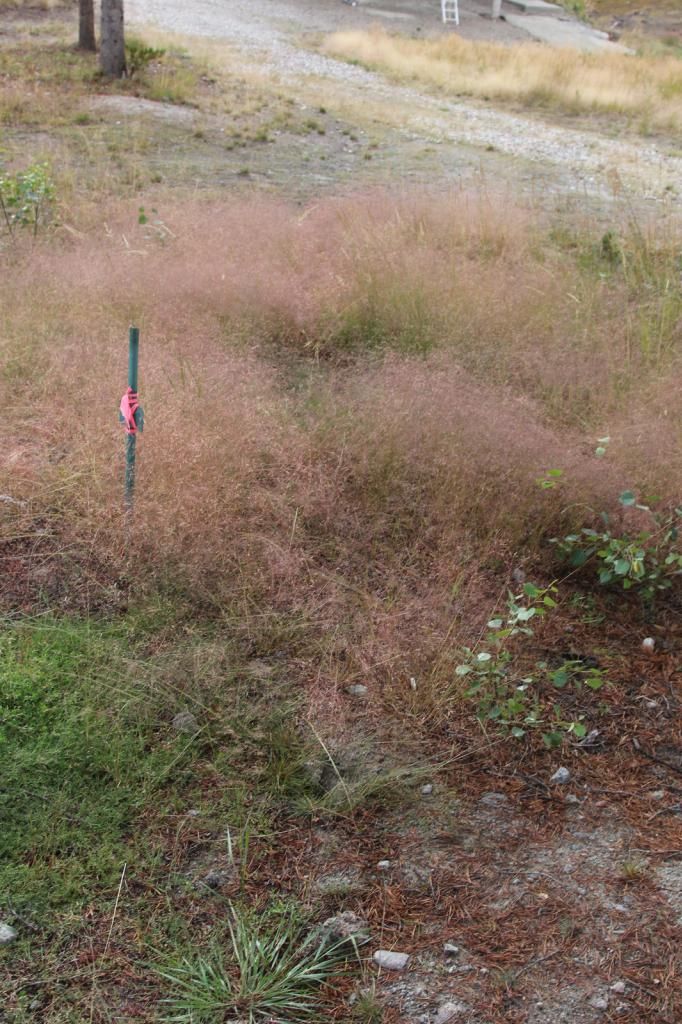

Eric went over many types of tracking signs and talked about tracking in different environments. He talked about using sign to infer things about the target and their condition, as well as things like formations for use during tracking, etc. After the very extensive lecture, he took us out into the woods and moved past trees, over logs, and through grass, demonstrating some of the different types of sign.
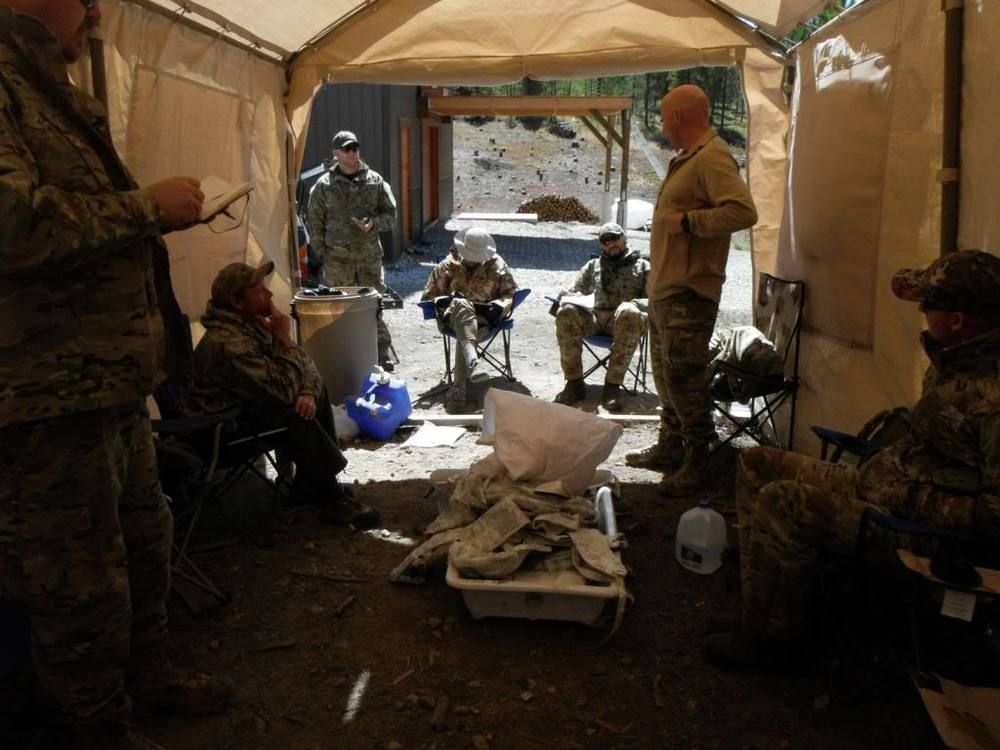
During the class, some of the students (mostly residents of Montana) asked Eric some questions about winter kit. The student hosting the class brought out some of his winter warfare gear and he and Eric talked about various options for clothing, LBE, and even sleds for moving gear.
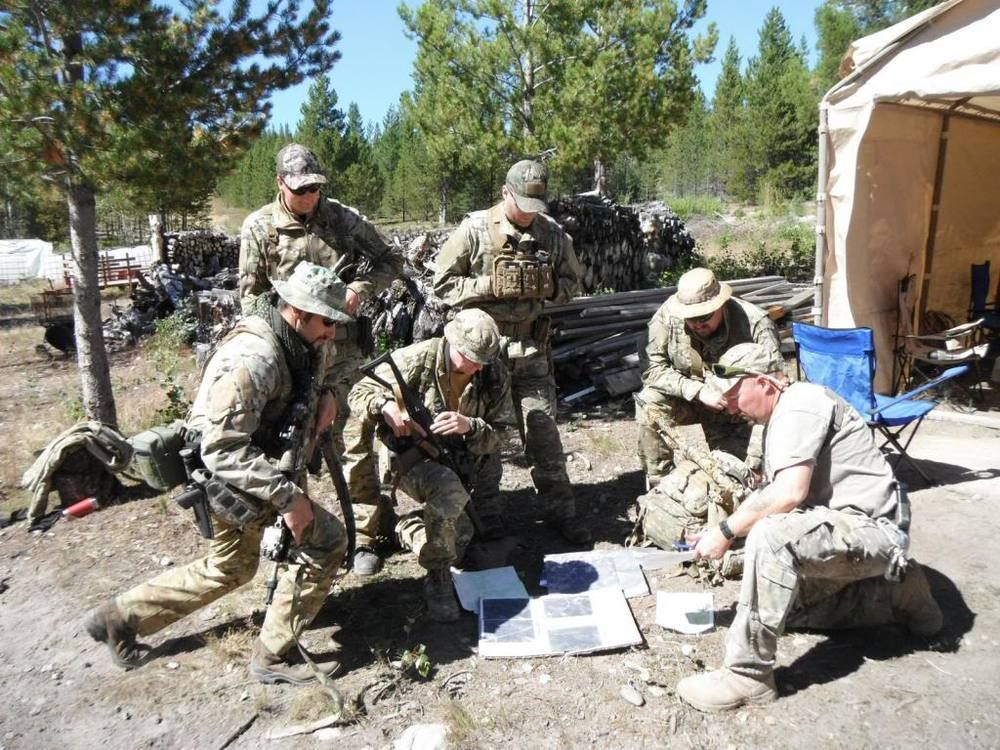
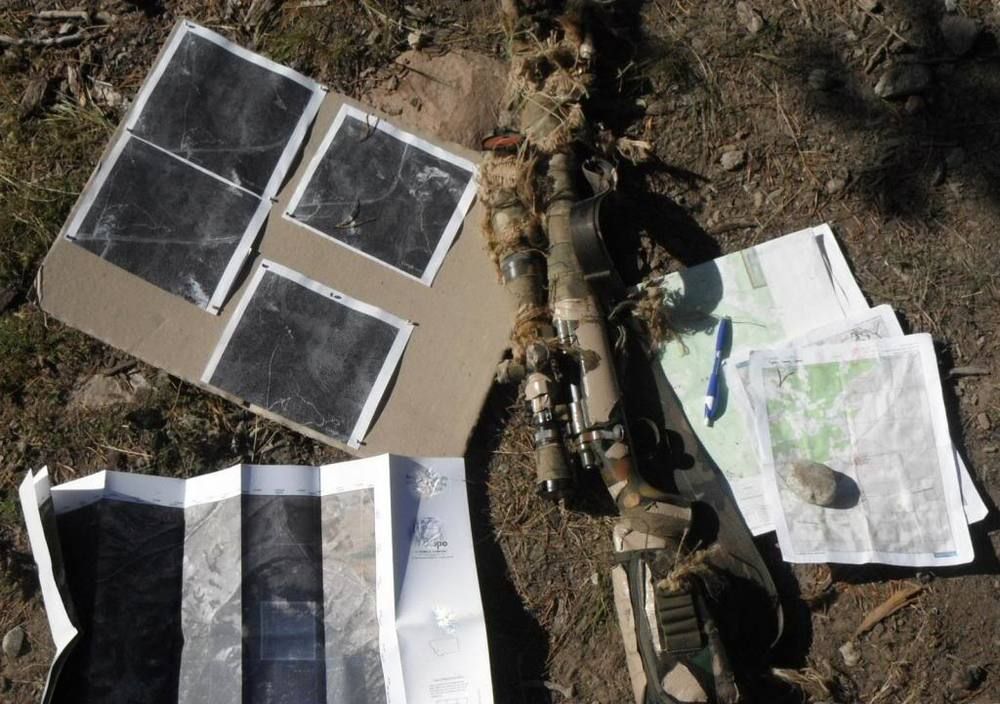
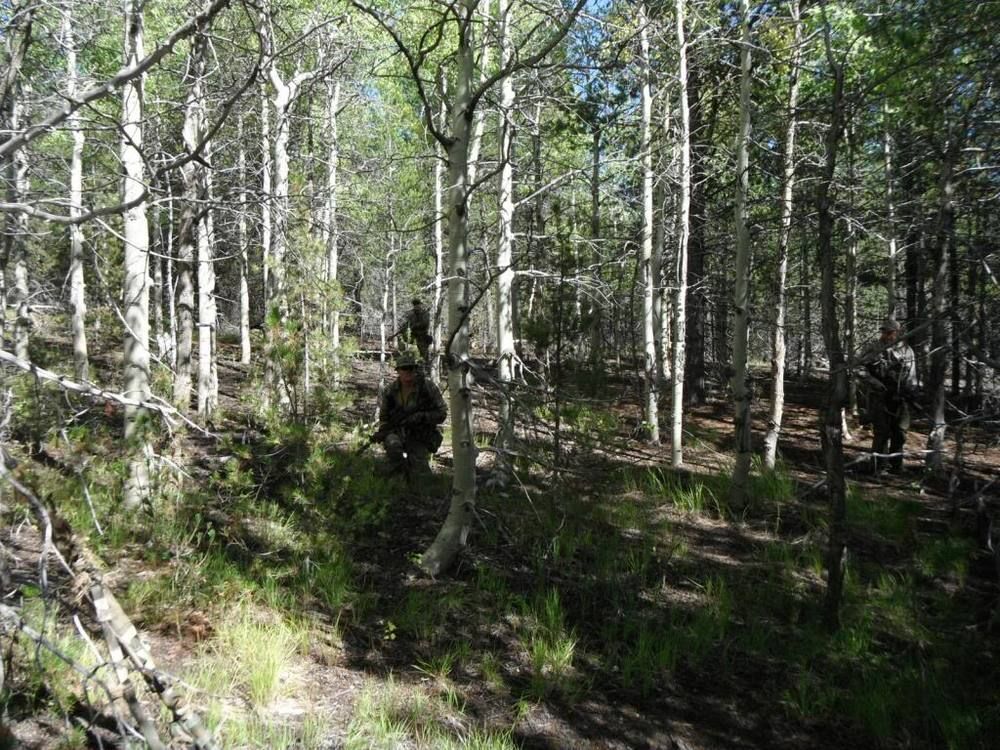
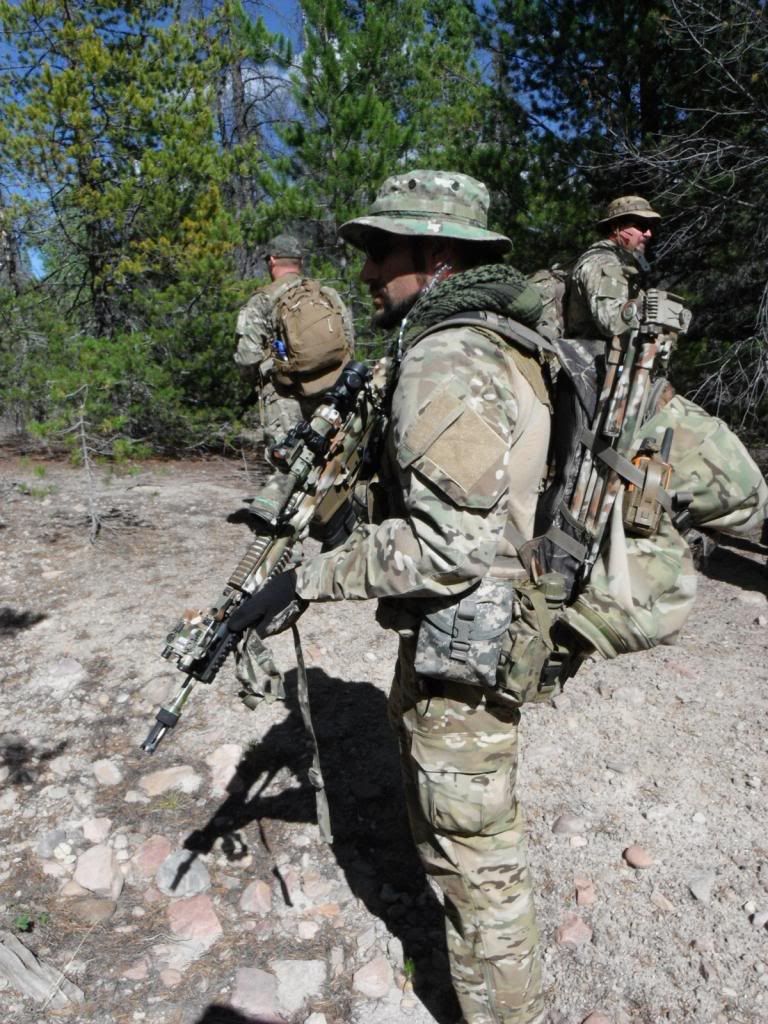
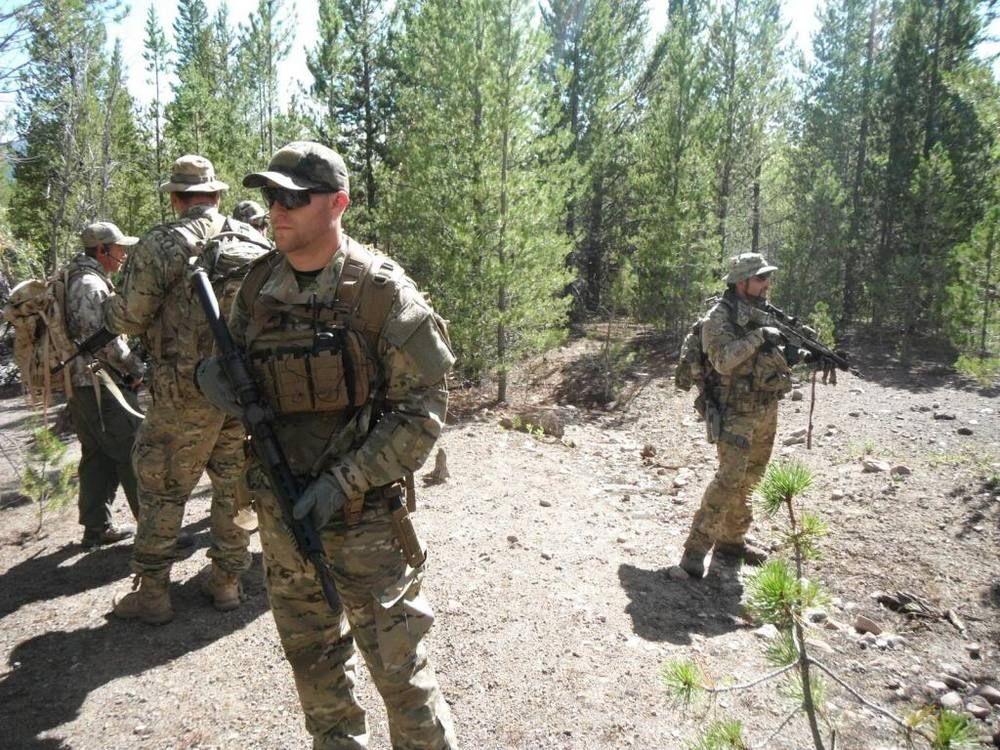
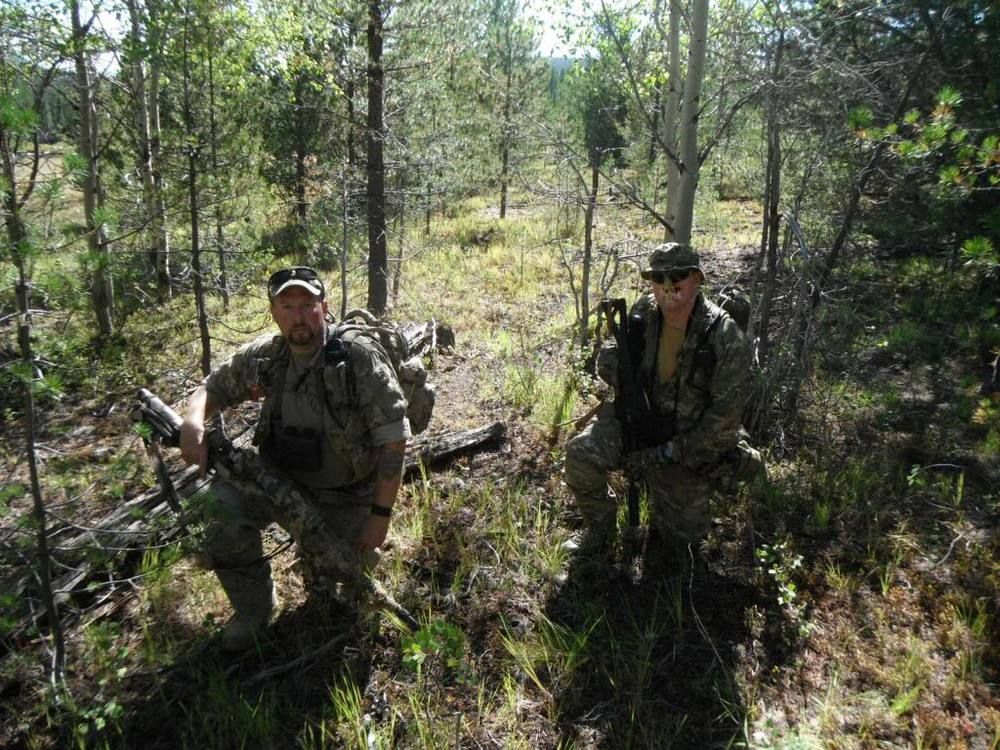
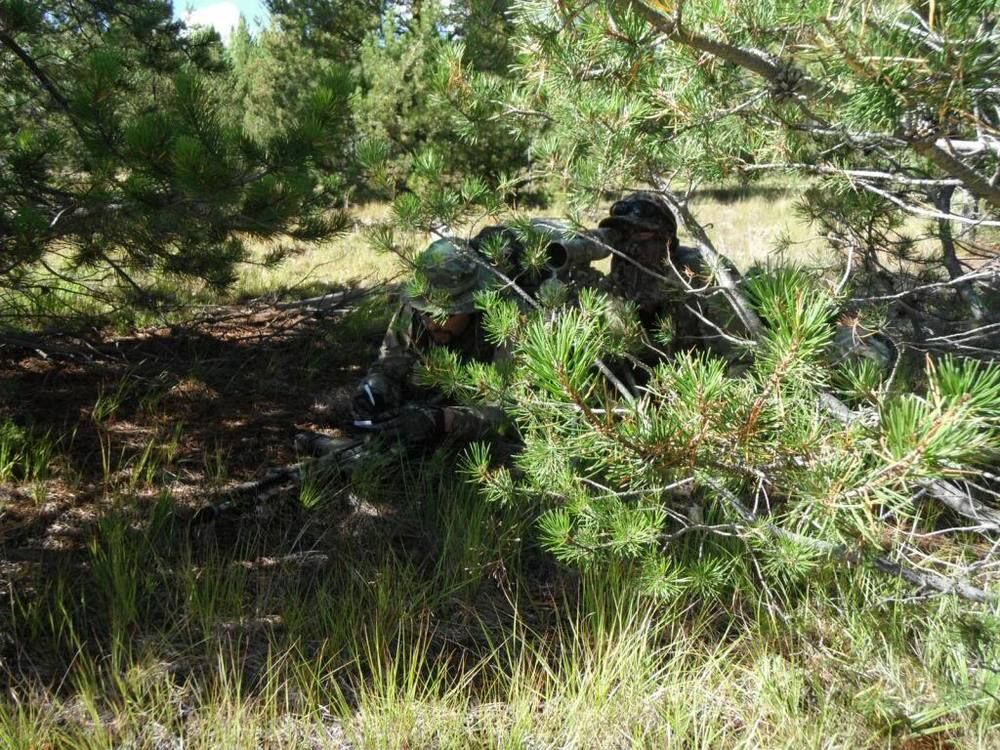
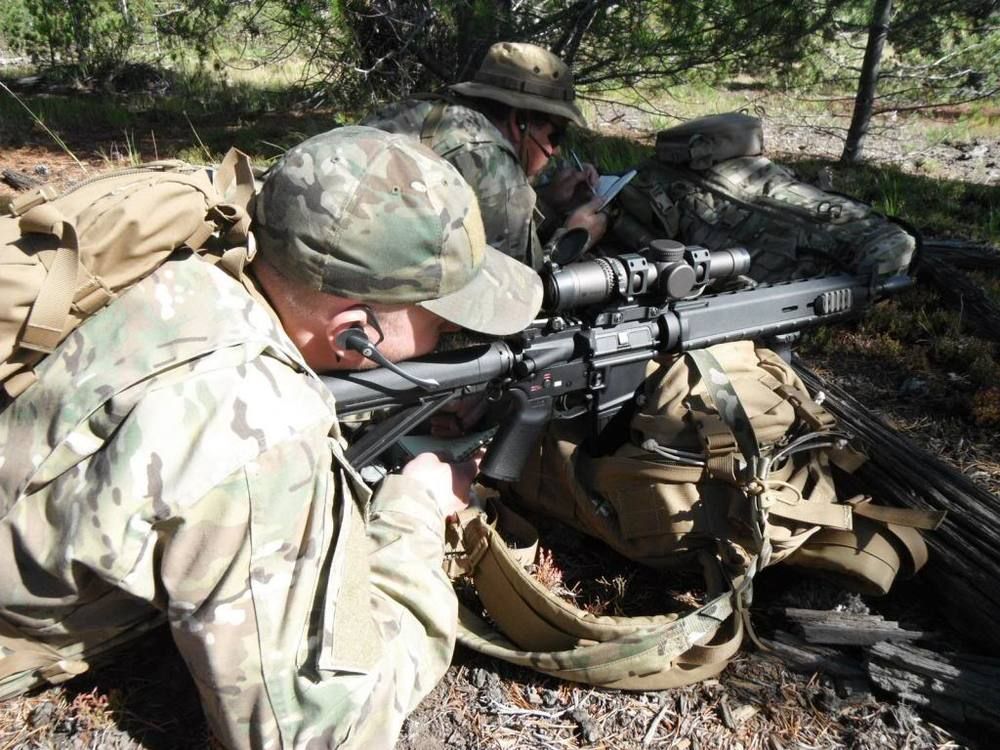
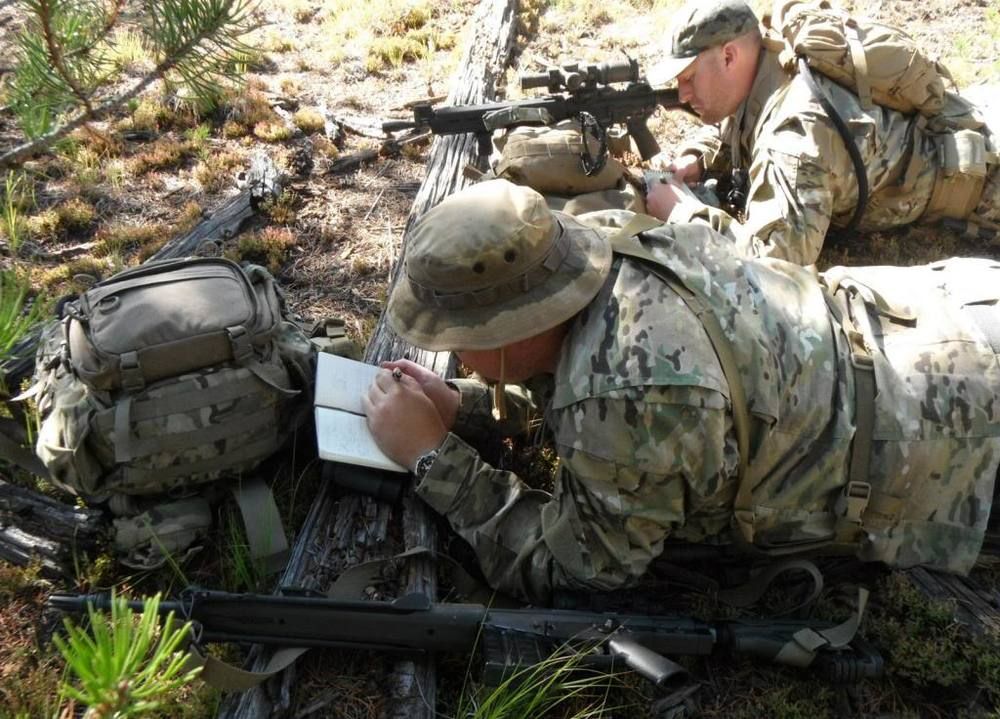
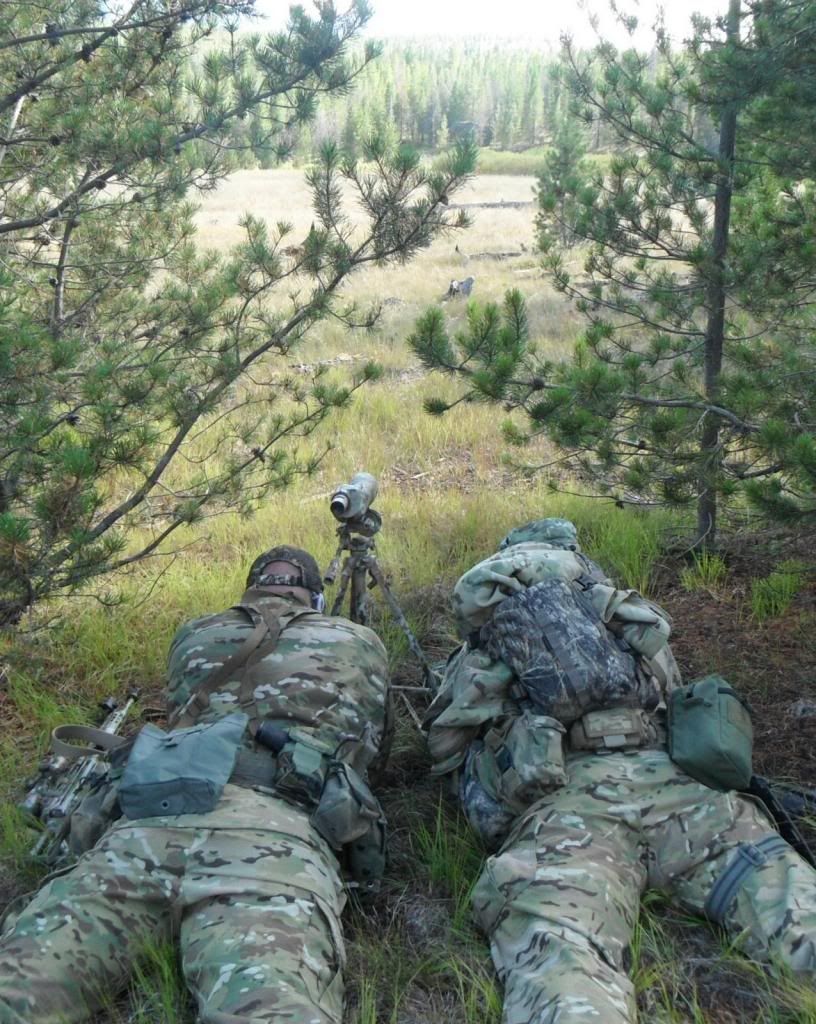
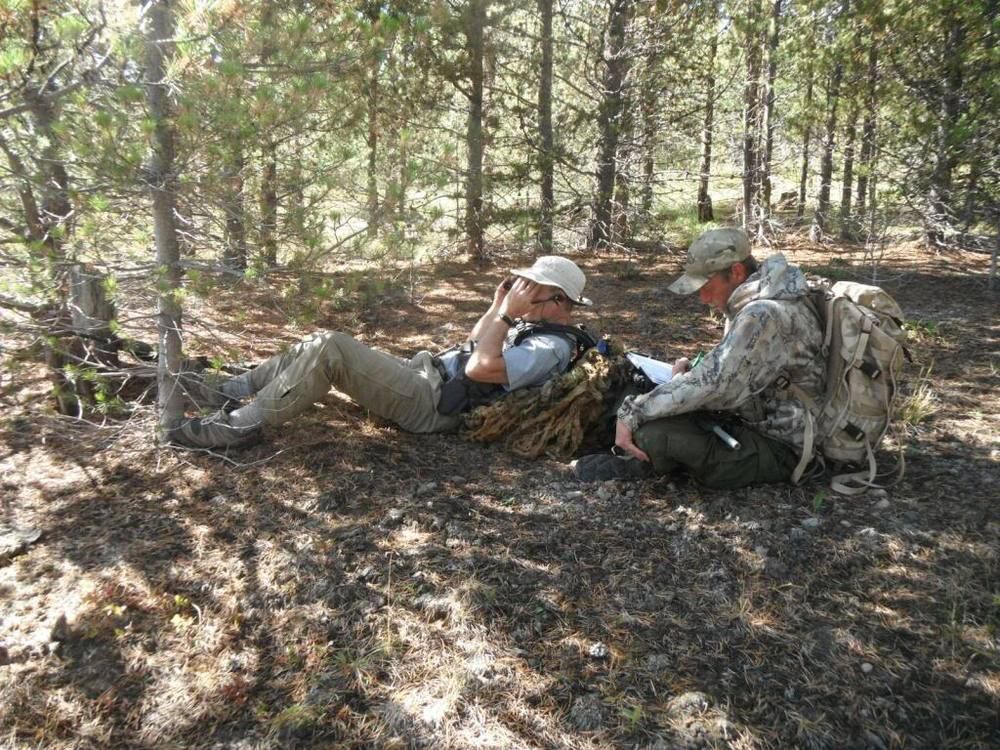




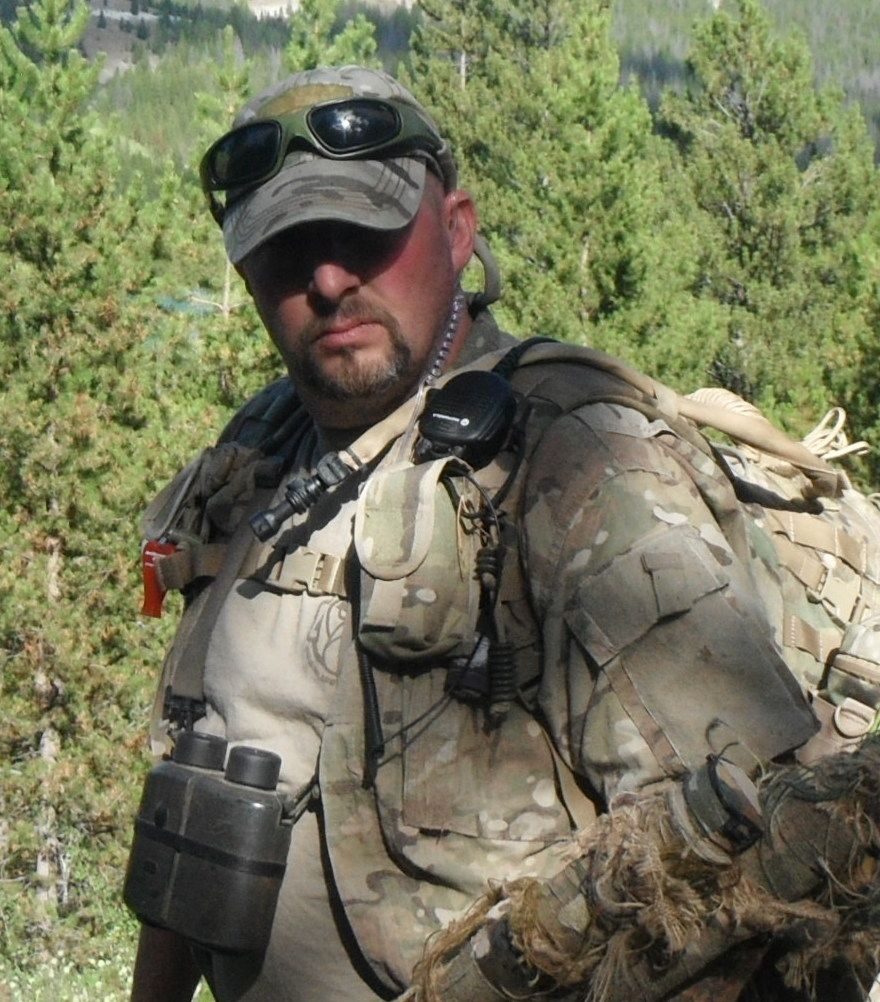
Once that was done we geared up for our last exercise. We moved over a nearby ridge and approached a hunting cabin, tasked with gathering some intel on it, much like we did the previous night. This time Eric got all the students pushed forward into observation positions so that everyone could have the experience of observing, sketching, and recording information about the target building, versus the more divide and conquer approach we used last night. After about ten minutes we pulled back and hiked back to base camp.
